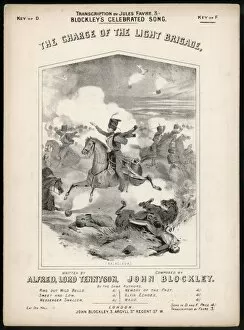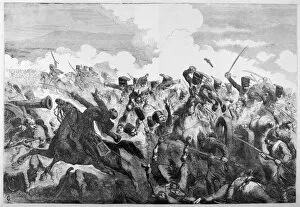Balaclava Collection (page 12)
"Balaclava: A Historic Battle and a Versatile Headgear" The word "balaclava" evokes images of bravery, heroism, and the Crimean War
For sale as Licensed Images
Choose your image, Select your licence and Download the media
"Balaclava: A Historic Battle and a Versatile Headgear" The word "balaclava" evokes images of bravery, heroism, and the Crimean War, and is synonymous with the Battle of Balaclava, where the Charge of Light Brigade took place on October 25th, 1854. This infamous battle has been immortalized in Lord Alfred Tennyson's poem "Charge of the Light Brigade, " capturing both the courage and tragedy that unfolded. During this historic event, soldiers from the 11th Hussars at Balaclava charged into enemy lines with unwavering determination. The British Light Cavalry Brigade fearlessly faced overwhelming odds as they galloped towards their adversaries. Their iconic balaclavas protected their faces from harsh elements while symbolizing their unity and resilience. The Crimean War marked a turning point in military history, showcasing not only strategic blunders but also acts of valor by individuals like Captain Scott who ventured into uncharted territories on skis. The Heavy Brigade under Simpson's command played a crucial role in supporting their comrades during this conflict. Beyond its association with war, balaclavas have found utility beyond battlefields. In motorsports like Formula One racing, drivers such as Emerson Fittipaldi donned these head coverings for added protection against wind and debris during high-speed races like the 1975 Monaco Grand Prix or events like the San Marino GP in 1994. Today, balaclavas continue to serve various purposes—whether it be providing warmth during winter sports or concealing identities for those engaging in extreme activities. They remain an enduring symbol of resilience and adaptability throughout history—a reminder that even amidst adversity, humans find ways to protect themselves while pushing boundaries.




